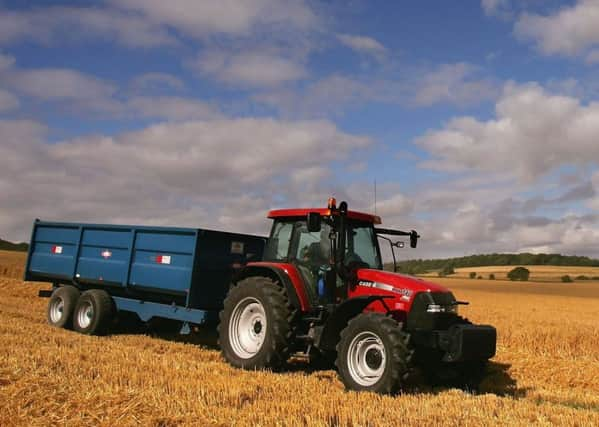Land values defy Brexit woes, says property firm Savills
This article contains affiliate links. We may earn a small commission on items purchased through this article, but that does not affect our editorial judgement.


Speaking at yesterday’s Savills Scottish Property Outlook conference, the head of the company’s rural agency, Charles Dudgeon, said he was optimistic that, short of a major shock or a sudden oversupply in the market, there was unlikely to be any substantial reversal in recent growth.
“Scottish land values have plateaued over the past three years following a period of prolonged growth,” he said. “2016 saw average land values fall, albeit by only 4 per cent.”
Advertisement
Hide AdAdvertisement
Hide AdHe said that despite this recent fall, over the longer term values in Scotland had still shown an average annual growth of 10 per cent per annum over the past 20 years.
Dudgeon said that while uncertainty, coupled with continued poor commodity prices, had filtered through to the market and capped some of the enthusiasm, the amount of farmland coming on to the market had remained constrained.
Estimating that around 44,000 acres had been marketed last year, he said that this was well below the 60,000 acre mark which, if breached, could press prices downwards.
“However with average values, there are distinct local variations and a widening price gap between the best and the poorest land across all land types,” he added. “Values in Aberdeenshire vary significantly from Berwickshire.“
Dudgeon said that scale appeared to be the main driving force in the market – achieved either through buyers relocating to a cheaper area or on a more local basis when farmers were hungry to expand for future survival – but investment opportunity and tax advantages had also played a role.
He admitted that Brexit was likely to create uncertainty over the next few years but argued that this could serve to restrict the amount of land coming on to the market.
“This is likely to support land values in the short term,” said Dudgeon. “And Savills’ research has forecast an increase in value for all land types across UK of 5.5 per cent by 2022.”
Advertisement
Hide AdAdvertisement
Hide AdAlthough more difficult to forecast, he said that it was probable that rental values – more clearly driven by farm profitability – could face pressures in the short term, but he added that this area was also driven by high demand and short supply.
Savills’ rural director Evelyn Channing said that the market for Scottish estates had been more active than in recent years.
However, there continued to be fewer buyers in the market – a situation which she claimed was not helped by talk of Indyref2 and misunderstandings over the Land Reform Bill.
She said that, in 2016, 62 per cent of buyers were from the UK – a notable shift from 2014, when 100 per cent of estate purchasers were foreign.
“Buyers are wary of third-party interests such as agricultural tenancies, crofting and community rights, and flexibility of ownership is key to this,” Channing added.
